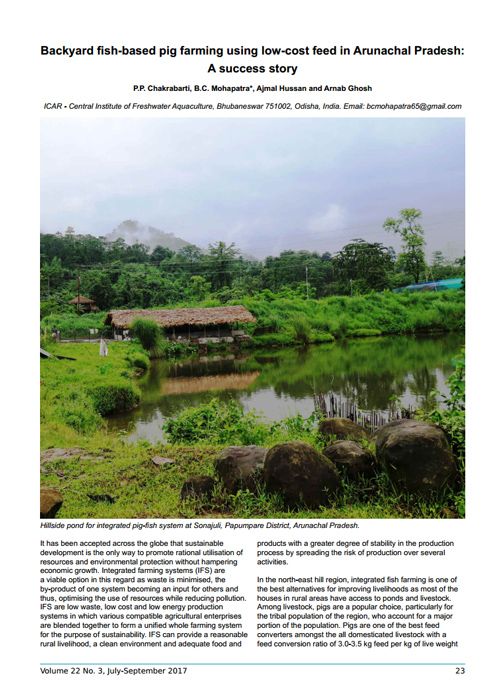Backyard fish-based pig farming using low-cost feed in Arunachal Pradesh: A success story
19 October 2017 | P.P. Chakrabarti, B.C. Mohapatra, Ajmal Hussan and Arnab Ghosh | 3322 Downloads | .pdf | 1.87 MB | Freshwater finfish, India, Inland aquaculture, Environment and Sustainability
In the north-east hill region of India, integrated fish farming is one of the best alternatives for improving livelihoods as most of the houses in rural areas have access to ponds and livestock. Among livestock, pigs are a popular choice, particularly for the tribal population of the region, who account for a major portion of the population. Pigs are one of the best feed converters amongst domesticated livestock with a feed conversion ratio of 3.0-3.5 kg feed per kg of live weight gain and can fit into diverse systems of management, and can be reared on a wide variety of waste materials.
Attempts have been made by ICAR-Central Institute of Freshwater Aquaculture (ICAR-CIFA), Bhubaneswar through its Kalyani centre, to disseminate integrated fish farming technology to different parts of the north-east hill states. As a part of that effort, integrated pig-fish farming technology has been demonstrated at remote places of Arunachal Pradesh. This article documents the experiences of Mr Tana Nikam Tara, a progressive fish farmer of Sonajuli, Arunachal Pradesh.
Creative Commons Attribution.

